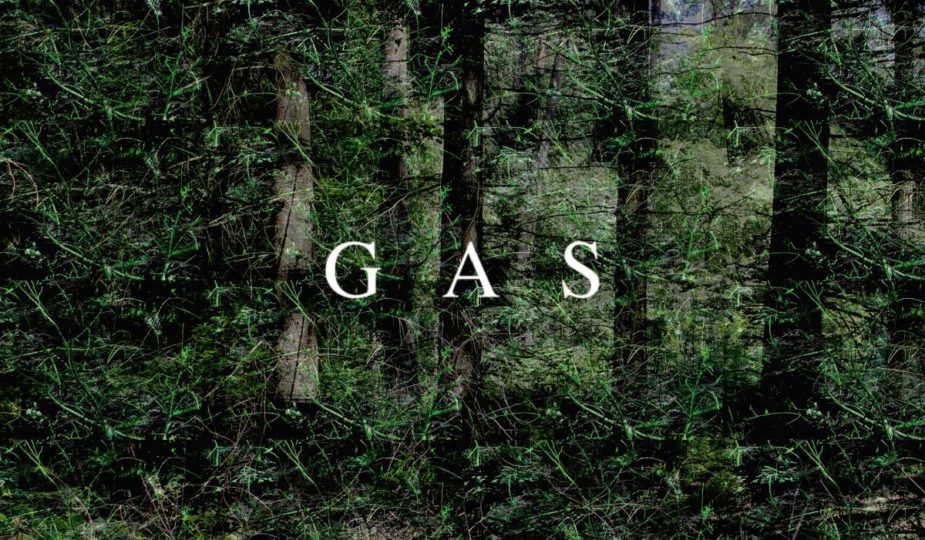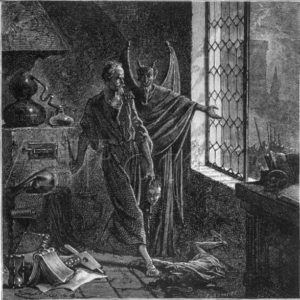
More Light, Less Hocus-Pocus: GAS-RAUSCH (2018)
Eigteenth of Oktember
Wolfgang Voigt, Rausch (2018)
The night falls
The king comes
The hunt starts
GAS is Wolfgang Voigt, co-founder of the legendary electronic music label Kompakt from Cologne, and Rausch (2018) is his masterpiece. On the cover art we see and on the two discs we hear the mythical German forests, birthplace of great sagas and the peak of romanticism. As inspiration for the precious Grimm’s tales that exported eerie German knowledge to an universal consciousness, to this day its being revisited by artists such as Lars von Trier, who will only film in the German forests for the right impact of his unsettling and radical films (f.e. Antichrist (2009), Melancholia (2011)).
Rausch is a hypnotic mix of ambient and classic with just a hint of techno. Cosmic music that is constantly on the edge to being a nightmare, yet it is strangely far from being otherwordly and keeps a sober and focused composure with a tireless physicality knocking at the pain threshold, which as whole is often reminiscent of Wagner. It should be listened to as a single composition and full symphony, and so it was premiered in the Cologne Philharmonia in the year of its release.
Voigt is taking us to the mythical German forests, but although the album is titled “Rausch“ („intoxication, ecstasy“), it is a not a mystical album celebrating the dreamlike, unconcious state and the vague darkness of vision resulting of that. This ecstasy has another connotation, it is an endless and relentless march through deadwood and undergrowth ornated with thorns, an hour-long voyage through these misty Teutonic forests, a record that brings together all senses by that it makes you feel the moss, hear the crack of wood under your steps, and smell the fog and rot. On the album’s artwork we see forests and trees where the sunshine gleams trough- Rausch is a testament to the horrors of the daylight which does without cheap effects like the full moon and wolf howls at night.
This forest here is mythically charged and sinister, but otherwise captivates through the absence of mythical and magical creatures, through its abstract realism. An analogy to the Grimm Brothers is ideally suited to work out the outstanding quality of Rausch: more revelation through light, and light’s closeness to the cosmic beat.
Curated and disneyfied by the cultural makers of the modern world, the original Grimm’s tales bear sinister truths that go beyond cartoonized princesses, wolves, and witches. They also go beyond the categorization of archetypes and psychoanalytical interpretation, which too often obscures more than it reveals due to its narrow theoretical and hypothetical nature. At the core of these tales which were kept alive (but also embellished, changed, and decoded) by the oral tradition, often true events are to be found.
A good example is Bluebeard (1812), which is the tale of a wealthy and powerful nobleman who has been married several times to women who have all mysteriously vanished. He gives his newest beautiful bride the keys to his huge castle, allowing her to explore any room, except for an underground chamber that he strictly forbids her to enter. Of course she enters it nevertheless, and discovers a blood-flooded room full of female corpses hanging from hooks on the wall and ceiling. She tries to cover up her actions and clean the the key which has dropped into the blood, but the key is magical and the blood cannot be removed, revealing her disobidience to her beastly husband.
Over the years, the interpretations of this chilling tale concentrated on gender questions and sexuality. The Christian reading emphasizes on allusions to the biblical story of man’s fall and the role of Eve / women as scapegoats for the origin of evil in Western civilization. The feminist perspective claims that it is a story about domestic violence and victimhood of women. The Freudian interpretation, most prominently carried out by Bruno Bettelheim, suggests that the forbidden room is symbolic for the unlocking of sexual desires, with the bloody key being a phallic symbol. All of this is valid and true – at the same time, none of it is valid and true, but almost harmful, since it entirely takes the focus away from the true story.
Bluebeard was initially written down in 1697 by Charles Perrault, who was also the true author of many other folk tales like Cinderella, Little Red Riding Hood, and The Sleeping Beauty. Perrault’s Barbe Bleue is directly inspired by a true historical figure, Baron Gilles de Rais. Baron de Rais was a very wealthy French nobleman and war hero as Marshal of France during the Hundred Years’ War, where he fought besides Jeanne D’Arc. He was a saint-like man concerned with religion and his own salvation, a man who financed the construction of chapels. He was also the satanist torturer and killer of approximately more than 400 children.
His first victim was a peasant boy. He strangled the child and cut off his hands. Then he tore his eyes and heart out. He used the flowing blood as ink to write occult texts. There was no stopping after this murder. Having given himself to decadence, alchemy and the occult, Gilles de Rais kidnapped  hundreds of children whereever he and his servants appeared, and then raped, tortured, and ritually murdered them in his underground chambers. His wife left him in horror, but kept silent about the crimes. Soon, the people figured out the identity of the beast who made the countless children disappear, but the families of the victims were restrained by fear and low social status from taking action against him- Gilles de Rais had the best relations to authorities and the clerics. But the people did their part in keeping the remembrance of the horrible crimes alive as oral tales though, which eventually ended up in different variations of the Bluebeard tale 250 years later.
hundreds of children whereever he and his servants appeared, and then raped, tortured, and ritually murdered them in his underground chambers. His wife left him in horror, but kept silent about the crimes. Soon, the people figured out the identity of the beast who made the countless children disappear, but the families of the victims were restrained by fear and low social status from taking action against him- Gilles de Rais had the best relations to authorities and the clerics. But the people did their part in keeping the remembrance of the horrible crimes alive as oral tales though, which eventually ended up in different variations of the Bluebeard tale 250 years later.
At the sixth day of his trial in 1440, Gilles confessed and spoke almost non-stop while cynically describing his murders in detail, re-living them almost joyfully. In the end he was executed. Two interesting things happened to the figure of the satanic Baron: De Rais had been contrite and composed in the face of execution, asking for God’s forgiveness, which brought him posthumous acclaim as a model of Christian penitence; excessive prayers for his soul and a three-day fast bordering on worship was observed after his death. And even more interestingly: despite the overwhelming evidence and his confessions, Gilles de Rais got depicted as innocent victim of the inquisition by some revisionists, paradoxically because of his satanism. And also our occult pop-star Aleisteir Crowley described de Rais as “in almost every respect… the male equivalent of Joan of Arc”, whose main crime was “the pursuit of knowledge“. Indeed by now, all the blooming real satanism and witchcult of the Middle Ages, often -because necessarily- practised by priests, seem to have been discredited and moved to the land of sagas and fairytales by same clerics and their very own ‘Holy Inquisition’.
But back to the echo of German forests in Wolfgang Voigt’s Rausch: like the historical reading of the Bluebeard story, it references the core of things and that what is, renouncing suggestion and deception, rejecting chaos amidst the thicket. It is the celebration and ecstasy of the clear conscience, a low-frequency horror only daylight can provide because of our sensory overload with nocturnal hocus-pocus and interpretation. Alternate perspectives on reality that with every closer inspection and illumination reveal themselves as escapism from truth more or less. Intruiging nightmares that put us to sleep like the incubus* that hides in the word ‘nightmare’. More light, less darkness, and darkness in the light – it is the horrors of the day, of what is really out there we should be examining, open-eyed.
by Saliha Enzenauer
***
*nightmare (n.) ca. 1300
Middle English (denoting a female evil spirit thought to lie upon and suffocate sleepers): from night + Old English mære ‘incubus’.
An incubus is a demon in male form who, according to mythological and legendary traditions, lies upon sleeping women in order to engage in sexual activity with them. Its female counterpart is a succubus.

[…] in his outstanding works with his project GAS, we enter the mythical Teutonic forests with the first dissonances and heavy fogs of sound, an […]
Hello Saliha,
Wonderful review. Hope you are doing well during these crazy times. I miss you and the LAMF group on Instagram but am enjoying your writing here!
Stay well and much love to you and yours, Michael
Hi Michael, so good to hear from you! I hope you are good and the lockdown didn’t affect you too much personally… As you know I’m always doing well, yet am still constantly fucked up by everything around me 😉 especially by such insanities like virus and health hysteria. Lamf indeed, just LIKE A MOTHERFUCKER .
Thanks for reading and the lovely feedback! Saliha
Beautifully written. The album is a piece of art.
Wow 😮
Thanks Saliha, your piece was reposted by Wolfgang Voigt via his Facebook and Instagram.
Fascinating. And the record sounds great!
Saliha, this is absolutely wonderful review. For me GAS (Zauberberg – Pop) is like a music in motion. Feels like I’m travelling by night train through the mystery, dark, foggy forests. Only the beats hold me safely inside. Like in old stories, I bet this train is black and sixteen coaches long. I’m not familiar with Rausch yet, but I’ll get it and open the Grimm’s book, again. Thanks.
Thank you Mika, very nice image with the black, sixteen coaches long train that’s driving steadily and heavily through the night. That train will take you to a special place in hell, have no doubt about it 😂
Hope you’re good over there in Finland!
Thanks Saliha, I’m fine. Yo’ve been here, so you know keeping social distances is natural here 😆 Hope you are well there
Hi, Saliha
I knew that you were going to introduce this outstanding artist, what can I say ? you definitely captured the essence of Voigt´s “GAS” project, this is one of your best reviews. I loved the Grimm´s tales analogies, as well as your insightful description of “Bluebeard”. I didn´t know that Von Trier filmed in German forests !. I´m truly speechless.
“Rausch” is a hidden masterpiece, the forest´s murky depths create an introspective dancefloor. Gorgeous soundscapes and hypnotizing repetitions merge with the bird´s song in the trees.
I´m so glad that I knew about the existence of this record, it´s an absolute multi-sensory experience…
Yes, Lars is Danish which is of course close to Germany, his name ‘Trier’ is actually the name of a German city. But Lars appreciates the eerie and mythical qualities of the forests here. ‘Antichrist’ is set in the Rocky Mountains, but was shot in the ‘Sieg Valley’ between Cologne and Bonn. That log cabin is half an hour from my place, which is kinda terrifying. Truth is that many films are shot in Germany due to the country’s big financial support of productions. Tarantino, Wes Anderson, von Trier… the list is endless. Hell, even one of the ultimate Paris-films “Amelie” was shot here in Cologne 😂
Thank you for these amazing facts, Saliha. I just saw the specific locations (forests) in which Von Trier filmed. Absolutely beautiful places, I’ll be there someday.
Wow, an hour and a half from Antichrist’s cabin… marvelous !
Tarantino, Anderson, Amelie… those are actually terryfing 😂
half an hour*, “terrifying” 😂
I never imagined anyone would capture the beauty, horror and timelessness of this one of a kind record. It’s not enough to call this electronic music. It’s so much more. Your description as of the music as much more epic and important than mere electronic music is appropriate. Wagner is indeed the only comparison that fits. Only you review goes deeper. The historical context you provide allows us to see the layers of this music and the rich, unsettling history around it. Brilliant album Brilliant review.
Saliha,
The music of Rausch certainly captures the cosmic darkness and otherworldly shadows of the ancient wilderness. Your in-depth discussion of both the French (Charles Perrault) and German (Brothers Grimm) cultural contexts and the Bluebeard story inspired by the horrific murders of serial killer Gilles de Rais is fascinating.
I’m especially intrigued (in my own research) by the astrological dimensions of Gilles de Rais, Charles Perrault, and Jacob Grimm.
I’ve noticed planetary patterns that recur in the natal charts of serial killers: Pluto Retrograde and Saturn Retrograde. Gilles de Rais had both prominent in his natal chart. (Georges Bataille was also born, like Gilles de Rais, on September 10 and examined erotic, psychosexual savagery but did so with his imagination and pen.)
Both Charles Perrault and Jacob Grimm were Capricorns–hence their collecting of folk tales. Capricorn is the sign most interested in ancestry and family trees. (Charles Perrault was a Capricorn Sun/Pisces Moon. Edgar Allan Poe also was Capricorn Sun/Pisces Moon–both writers explored the hidden unconscious.)
Hi Mark, you’re a breathing computer brain! I’m puzzled by the amount of data you can recall in order to build contexts. Astrology is not my field, but it’s fascinating nevertheless. Bluebeard and other folk tales are fascinating, since they often relate to true events. Take the Pied Piper of Hamelin from my last Le Bon story fe. There is still a window in the church of the German city of Hameln that is remembering the true events behind this saga. Another example is Count Dracula – most people have no clue that he really existed and that Transylvania is a real place in Romania…
GAS! I loved “Zauberberg” , but “Rausch” completely sucks you in, it’s so very good. I would love to see it performed in a classical concert house.
I never knew about the true person behind the Bluebeard tale, which was always the most scariest Grimm’s tale for me. Gruesome and terrifying. Great read!
That tale was so odd within their classics… I’m bummed I missed out on the premiere of this record, would have been a unique experience
Bravo, this is chilling and awesome. The sound sample on here is incredibly good👍
All of the GAS records are magnificent, but this one’s a haunting masterpiece
Gas is asking himself what the hell this satanic baron has to do with his record 😂 Fantastic story!
I bet! It’s important to note that this is purely my associations and synapses, the record is definetely not about Baron de Gilles
Stunning piece of writing. I couldn’t describe this style if I had to, poetic information and wisdom all over. The track sounds awesome and like a perfect soundtrack for your thoughts.
Thanks a lot! The entire record (one long track actually) is so outstanding
Saliha, your texts are never just a record review but have a million interesting layers! Congratulations, this one is incredible!
Thank you, it’s a very special record & artist